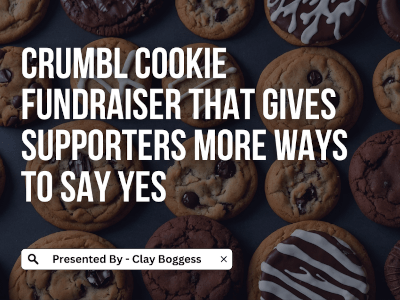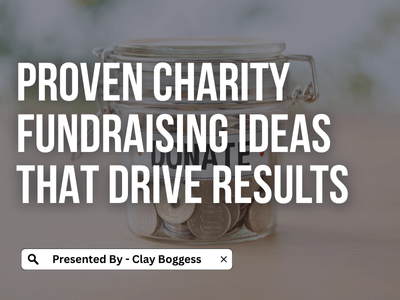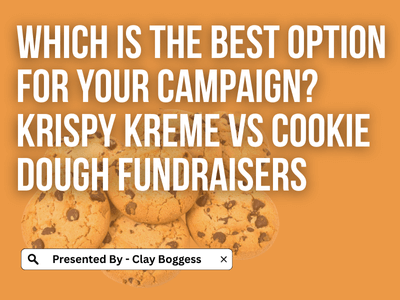
Combine these fundraiser products and prizes for big results.
School fundraisers are just as much of an art as a science. These critical, money-raising events combine creativity and strategy that leverage the appeal of amazing products coupled with the power of high participation.
As you plan your school fundraising project, it’s easy to miss the forest for the trees. While focusing on individual metrics like participation or sales volume is critical to evaluating and improving, looking at the big picture can transform your perspective and help you make strategic choices that lead to big results.
A school fundraiser comprises a few major concepts, and tying every small decision to one of these big components is a valuable organizational tool. Remember these as you build committees, select school fundraising companies, and create a plan to help your school meet its goals.
- The School Fundraising Product or Brochure
- The School Fundraising Prize Program
- The Fundraising Mission, Vision, and Goal
1. The School Fundraiser Product or Brochure
Catalog sales rely heavily on the sale of quality, appealing fundraising products. This is the “bread and butter” of your school fundraising program, which affects appeal, profit, interest, and your overall success. The most essential aspect of a winning school fundraiser is selecting the right product or brochure.
Product fundraisers traditionally involve the selection of one item or one type of item, such as a candy bar fundraiser or a popcorn fundraiser. Students will focus on selling only this item. Product fundraisers are generally novelties with widespread appeal at a very accessible price point. They’re easy to execute and manageable for student groups to sell at school to their peers and outside the community.
Alternatively, many of our variety shopper brochure fundraisers offer customers a large selection of products, confections, and even subscriptions to select from. These catalogs of goods often have a seasonal focus and are likely to have something for every customer. The items have variable price points. Parents will often bring these catalogs to their friends and coworkers.
When selecting whether you’ll sponsor a product or brochure fundraiser, ask the following questions:
- What type of fundraiser have we done, and has it been successful?
- What is our fundraising goal? Can we sell enough of one product to meet it, or do we need higher-priced items or choices to reach more people?
- Are we selling at school, where products must be easy to sell, or in the community, where variety brochures with more choices will thrive?
Most importantly, your product or brochure should excite you and those involved in the fundraiser. You must be passionate about what you’re selling and why you’re selling it.
2. The School Fundraiser Prize Program
An exciting prize program is the second key to success for your school fundraiser.
School fundraisers are driven by student engagement and participation. The degree to which students are excited about what they can earn has a demonstrable impact on the performance of a school fundraiser. Give equal weight to the accompanying prize program.
You can pair a brochure fundraiser with a traditional or Big Event Prize program. Traditional prizes allow students to earn points to redeem for toys, gadgets, or apparel. These programs put goods in the hands of qualifying students at the end-of-school fundraiser. Big Event prize programs are experience-based events that allow students to attend a fun-filled (and educational!) program, like a magic show or reptile adventure.
You may consider polling the student body to determine what appeals most to the students in your school. Responding by selecting what interests most students will show that you’re listening to what motivates them. Additionally, suppose you need to increase the number of students participating or inject some energy into your school fundraiser. In that case, the Big Event programs have lower item requirements that allow more students to get involved—which means more students will be incentivized to sell.
3. The School Fundraising Mission and Goal
Tying your product and prize together is the overarching mission and goal. This abstract quality sets the tone for your school fundraiser and helps tell why your school is hosting a fundraiser.
A few critical distinctions between the fundraising mission and goal warrant discussion. These differences can help you fine-tune your strategies to raise more money than ever.
Your fundraising mission will generally be a more abstract, thematic idea. A mission will frame up a problem and solution that impacts the school or educational community at a larger level. We’ve shared how the mission ties the product to the impact of the school fundraiser, helping them see how their purchase is more than a purchase—it’s an investment in education. You can check out the Big Fundraising Ideas Blog to learn more about crafting a mission for a successful school fundraiser.
More narrowly, a goal is one step in getting your mission accomplished. The goal is usually quantified—a dollar amount or participation percentage. This objectivity provides a useful benchmark for evaluation and improvement. Your goal should be informed by past performance and demonstrated future needs. The more data that goes into forming your goal, the more realistic it will be.
We encourage school fundraisers to consider all of these components in tandem when deciding the structure of their next school fundraiser. Each informs the others in important ways to help you strike a balance and reach bigger goals each year.
Author Bio
Clay Boggess has been designing fundraising programs for schools and various nonprofit organizations throughout the US since 1999. He’s helped administrators, teachers, and outside support entities such as PTAs and PTOs raise millions of dollars. Clay is an owner and partner at Big Fundraising Ideas.



